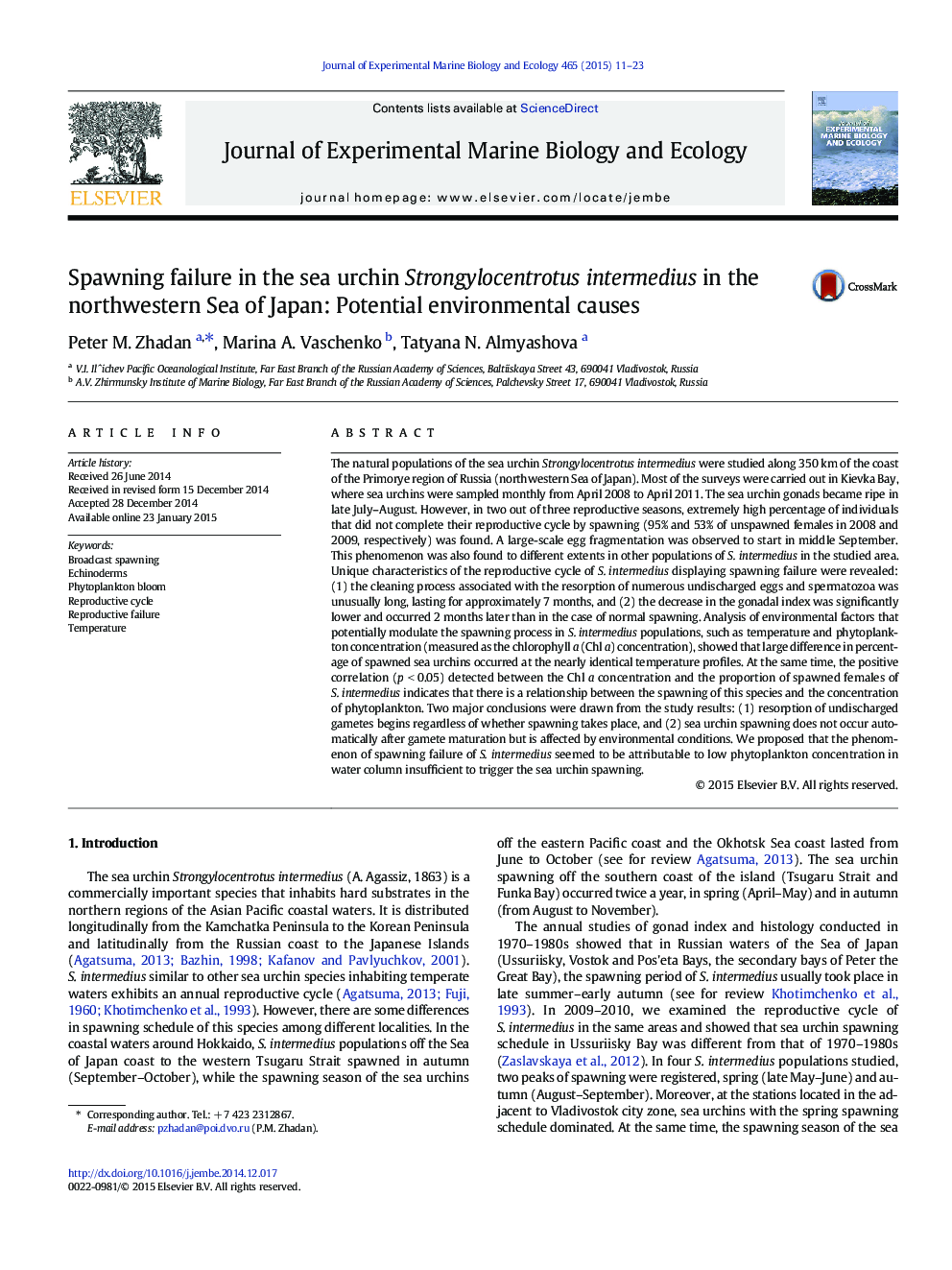| کد مقاله | کد نشریه | سال انتشار | مقاله انگلیسی | نسخه تمام متن |
|---|---|---|---|---|
| 4395506 | 1618410 | 2015 | 13 صفحه PDF | دانلود رایگان |

• First study of the phenomenon of spawning failure in sea urchin natural populations
• Up to 95% of female sea urchins did not complete their reproductive cycle by spawning.
• Undischarged gametes underwent resorption which lasted for approximately 7 months.
• Portion of spawned females positively correlated with the chlorophyll а concentration.
• Spawning failure in sea urchins seems to be attributable to low phytoplankton level.
The natural populations of the sea urchin Strongylocentrotus intermedius were studied along 350 km of the coast of the Primorye region of Russia (northwestern Sea of Japan). Most of the surveys were carried out in Kievka Bay, where sea urchins were sampled monthly from April 2008 to April 2011. The sea urchin gonads became ripe in late July–August. However, in two out of three reproductive seasons, extremely high percentage of individuals that did not complete their reproductive cycle by spawning (95% and 53% of unspawned females in 2008 and 2009, respectively) was found. A large-scale egg fragmentation was observed to start in middle September. This phenomenon was also found to different extents in other populations of S. intermedius in the studied area. Unique characteristics of the reproductive cycle of S. intermedius displaying spawning failure were revealed: (1) the cleaning process associated with the resorption of numerous undischarged eggs and spermatozoa was unusually long, lasting for approximately 7 months, and (2) the decrease in the gonadal index was significantly lower and occurred 2 months later than in the case of normal spawning. Analysis of environmental factors that potentially modulate the spawning process in S. intermedius populations, such as temperature and phytoplankton concentration (measured as the chlorophyll а (Chl а) concentration), showed that large difference in percentage of spawned sea urchins occurred at the nearly identical temperature profiles. At the same time, the positive correlation (p < 0.05) detected between the Chl а concentration and the proportion of spawned females of S. intermedius indicates that there is a relationship between the spawning of this species and the concentration of phytoplankton. Two major conclusions were drawn from the study results: (1) resorption of undischarged gametes begins regardless of whether spawning takes place, and (2) sea urchin spawning does not occur automatically after gamete maturation but is affected by environmental conditions. We proposed that the phenomenon of spawning failure of S. intermedius seemed to be attributable to low phytoplankton concentration in water column insufficient to trigger the sea urchin spawning.
Figure optionsDownload high-quality image (189 K)Download as PowerPoint slide
Journal: Journal of Experimental Marine Biology and Ecology - Volume 465, April 2015, Pages 11–23